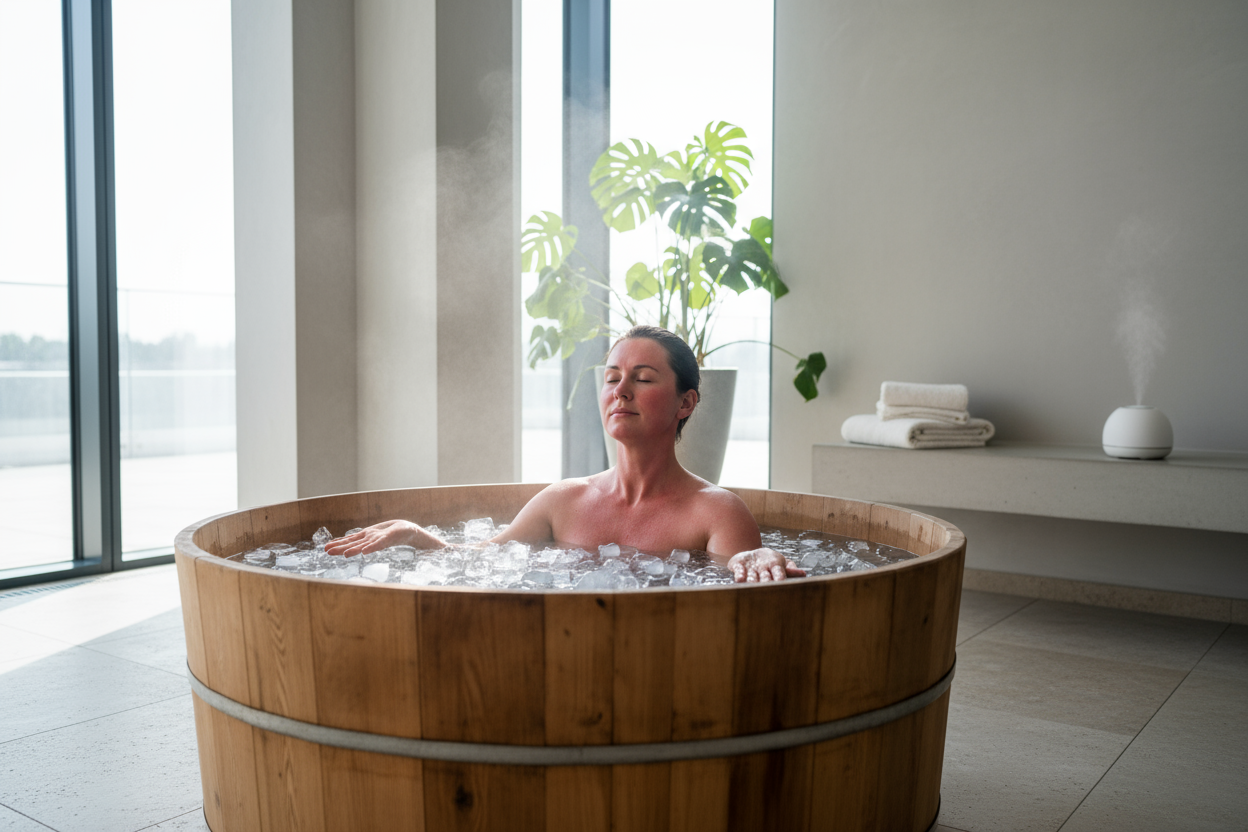In our previous article, we explored how melanin – the pigment that gives color to our skin and hair – is an incredible protector against UV radiation and a detoxifying shield against heavy metals. We learned that its production is triggered by exposure to UV light and that it is evidence of the amazing intelligence of our body.
Today, we will dive deeper into a fascinating paradox: How is it possible that solar UV radiation, notorious for its harmful effects and association with skin cancer, can also protect us and even help prevent DNA damage? We will explore not only the activation of DNA repair mechanisms but also the specific role of photorepair and the impact of disrupting the natural light spectrum by modern protective agents.
UV Radiation: More Than Just a Threat
Medical advice often urges us to maximize sun protection and avoid it. And it is true that excessive and uncontrolled exposure to UV radiation undoubtedly increases the risk of sunburn, premature skin aging, and skin cancer. UV radiation has enough energy to directly damage our DNA, leading to mutations that can be cancerous. However, nature is much more complex and sophisticated. Our bodies have evolved over millions of years in an environment where the sun was a constant factor. Instead of being passive victims, we have developed incredibly clever adaptive mechanisms. UV radiation is not just a threat to us but also a crucial biological signal.
Intelligent Body Response: UV as a Trigger for Defense and Repair
Let's break down how this paradox works and what other mechanisms are involved:
Activation of melanin production: As we have already mentioned, UV radiation is an essential catalyst for triggering melanin synthesis through a cascade that begins with the protein proopiomelanocortin (POMC). When we expose ourselves to the sun (sensibly!), our body immediately responds and starts producing more of this protective pigment. Melanin then acts as a natural, built-in sunscreen, absorbing and safely dispersing harmful UV rays before they can damage our DNA. It's like a preventive "vaccination" – the body prepares itself for future exposure.
Hormonal Cascade from POMC – Not Just Melanin! POMC is a fascinating protein that is not only a precursor for alpha-MSH (key for melanin). POMC is also cleaved into other important substances with wide physiological effects:
Beta-endorphins: These natural opioid peptides cause feelings of euphoria and suppress pain. That's why we feel so good after sunbathing – a kind of "sunshine intoxication."
ACTH (adrenocorticotropic hormone): Although its primary role is in adrenal regulation and stress response, its presence in the cascade highlights the connection between skin reactions and the body's systemic functions.
Melanotropins (including alpha-MSH): They affect not only pigmentation but also have anti-inflammatory and immune-boosting effects.
Possible connection with dopamine: Although dopamine is not a direct product of POMC cleavage, the process of melanin synthesis and other neurohormonal cascades triggered by UV radiation can indirectly influence the production and release of dopamine, further contributing to feelings of well-being, motivation, and an overall better mood. In this way, the sun acts as a natural "booster" for our mental health.
Stimulation of DNA repair mechanisms: A small amount of DNA damage caused by UV radiation (even in mild doses) is not always a negative event. It acts as an alarm signal for our cells to activate their sophisticated DNA repair mechanisms. These cellular systems, such as nucleotide excision repair (NER), are highly effective at locating and fixing damaged sections of DNA. Regular but mild "challenges" from UV exposure can keep these repair systems in optimal condition and readiness. It's similar to exercising muscles – mild stress strengthens them.
Photo repair – the magic of 390 nm: Here comes one of the most amazing mechanisms. While UVB radiation can damage DNA, certain wavelengths of light—specifically around 390 nm (right at the boundary between visible light and the UVA spectrum)—are crucial for us. These photons activate enzymes like photolyase, which can directly and efficiently repair UV-induced DNA damage, especially the so-called cyclobutane pyrimidine dimers (CPDs). This process is called photorepair and, although it is less pronounced in mammals than in plants or bacteria, it remains significant. So, the sun provides us not only with the "harmful" spectrum but also with "healing" wavelengths for repair!
Sun callus – strengthening resilience: When our skin is repeatedly exposed to moderate doses of sunlight, it not only produces melanin but also thickens its stratum corneum. This adaptive mechanism is sometimes called a "sun callus." A thicker stratum corneum combined with increased melanin production provides a stronger physical and chemical barrier against future UV radiation, reducing the penetration of rays into the deeper layers of the skin and minimizing the risk of damage. It's like training for your body. You can't run a marathon or compete in a world championship without prior training. Similarly, you can't expect your skin to be resistant to intense sun exposure unless you gradually prepare it for it.
Vitamin D synthesis: One cannot overlook the essential role of the sun in the synthesis of vitamin D. This "sunshine vitamin" is crucial for many bodily functions, including a strong immune system and the prevention of chronic diseases, including certain types of cancer.
Danger of disrupting the natural spectrum: Creams and glasses
In the context of this paradox, it is important to consider how modern protective measures influence this complex interaction:
Sunscreens and UVB Protection: Most sunscreens focus on blocking UVB radiation, which is the main cause of sunburn and DNA damage. While this is important for preventing acute harm, it can also limit the natural production of vitamin D and suppress triggers for melanin production and activation of DNA repair mechanisms. If sunscreens also block the "healing" wavelengths needed for photorepair, it can paradoxically weaken the skin’s natural defenses.
Sunglasses and disruption of the circadian rhythm: Just as creams alter the spectrum of light reaching the skin, sunglasses fundamentally change the spectrum of light reaching the eyes. This can disrupt the circadian rhythm (the internal biological clock) and affect the production of hormones like melatonin, which are crucial for sleep and overall health. Blocking certain wavelengths can paradoxically interfere with the natural processes involved in our immune defense and regeneration.
Conclusion: Balance and Respect for Nature
This paradox highlights the complexity and intelligence of our biological system. Our body is designed to thrive in interaction with the natural environment, including sunlight. It’s about finding a balance – not completely avoiding the sun, which could weaken our natural protective mechanisms and lead to a vitamin D deficiency.
Instead, let's focus on a smart and sensible approach to the sun:
Regular but short-term exposure: Expose yourself to the sun regularly, but in shorter intervals, especially outside of the midday peak. Before embarking on a "tanning marathon," give your body time to build its "sun callus."
Listen to your body: Avoid burning and excessive exposure that can overwhelm natural defense mechanisms.
Priority of mechanical protection and shading: If you know you will be in the sun for an extended period or during its peak intensity (around midday), prioritize mechanical protection such as moving into the shade, wearing lightweight clothing with long sleeves and pants, or a head covering (hat, cap). This allows you to control your level of exposure and avoid sunburn while still letting your body enjoy the benefits of the full sun spectrum in a reasonable amount.
Support your natural defense: Reasonable sun exposure activates your body to produce melanin, strengthen DNA repair processes (including photorepair), and build a "sun callus," which is a much deeper and more complex protection than any external barrier.
Consider when it is truly necessary to use strong creams and sunglasses to avoid disrupting the body's natural and beneficial interactions with the sun's spectrum.
Trust the intelligence of your body. When we provide it with the right stimuli (including sensible sun exposure and a full spectrum of light), it can defend itself and optimize its health on many levels, including improved mood and vitality!




Leave a comment
This site is protected by hCaptcha and the hCaptcha Privacy Policy and Terms of Service apply.